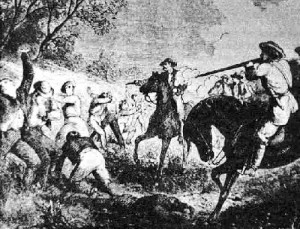
We all know about the Civil War. It was one of the most important events in American history. Opinions differ as to what caused the war. Many things are to blame. Slavery certainly played a major role in dividing the nation and moving it towards Civil War. The Confederacy was not created for the sole reason of making slavery legal. The rights of States to decide the law for themselves was another major cause. The Confederates believed that they were fighting for the liberty promised by the founding fathers. They believed that their cause was a holy one and that they were the guardians of America’s constitutional heritage. Furthermore, the North and South were divided by simple cultural differences. The rural, agrarian South was more traditional and conservative while the urban, industrial North was more liberal and progressive. Tariffs and other economic and commercial disagreements also contributed to the Civil War.
Before Abraham Lincoln issued the Emancipation Proclamation in 1862 the Abolitionist crusade was led by men like William Lloyd Garrison, editor of the popular Abolitionist paper The Liberator, Frederick Douglass, an escaped slave and John Brown, arguably the most radical of the group. Brown was a fervent abolitionist and certainly believed that this fight to free slaves was just that–a fight, a war. Before the Civil War began, a prologue was fought on the American frontier territory of Kansas. One could say that Kansas “bled”.
The conflict in Kansas lay in slavery, almost singularly. While the causes of the Civil War were multifaceted, the cause of the “war” in Kansas was slavery. Nothing more, nothing less. Stephen Douglass, the orator who engaged Lincoln in the Great Lincoln-Douglass Debates, was a proponent of a principle called popular sovereignty. This principle called for the citizens of territories and states to vote on whether to allow slavery, directly. Rather than leave this critical decision in the hands of representatives, Douglass argued that the populace vote directly through a referendum vote. Kansas prepared to hold a vote of popular sovereignty. Settlers poured into Kansas to sway the vote and fighting broke out between the two sides: free state and slave state supporters.
Brown and his supporters were in the midst of the fighting in Kansas. The “war” began in 1854 and involved guerrilla fighting in Kansas, as well as in Missouri. John Brown and his men raided towns and killed slave state supporters at will. Meanwhile, the slave state forces used the same tactic. One slave state leader was the infamous William Quantrill, who led slave state supporters in numerous raids, massacring free state supporters. His murderous attacks continued during the Civil War. His most infamous strike was against Lawrence, Kansas in 1863.
After much fighting, the free state supporters emerged victorious in Kansas. Brown would not exit quite yet, though. He would seize the arsenal of Harper’s Ferry, Virginia, in 1859, attempting to incite rebellion amongst slaves. After his capture at Harper’s Ferry, he was executed. Brown’s raid on Harper’s Ferry and his execution further aggravated the tensions between the North and South.
